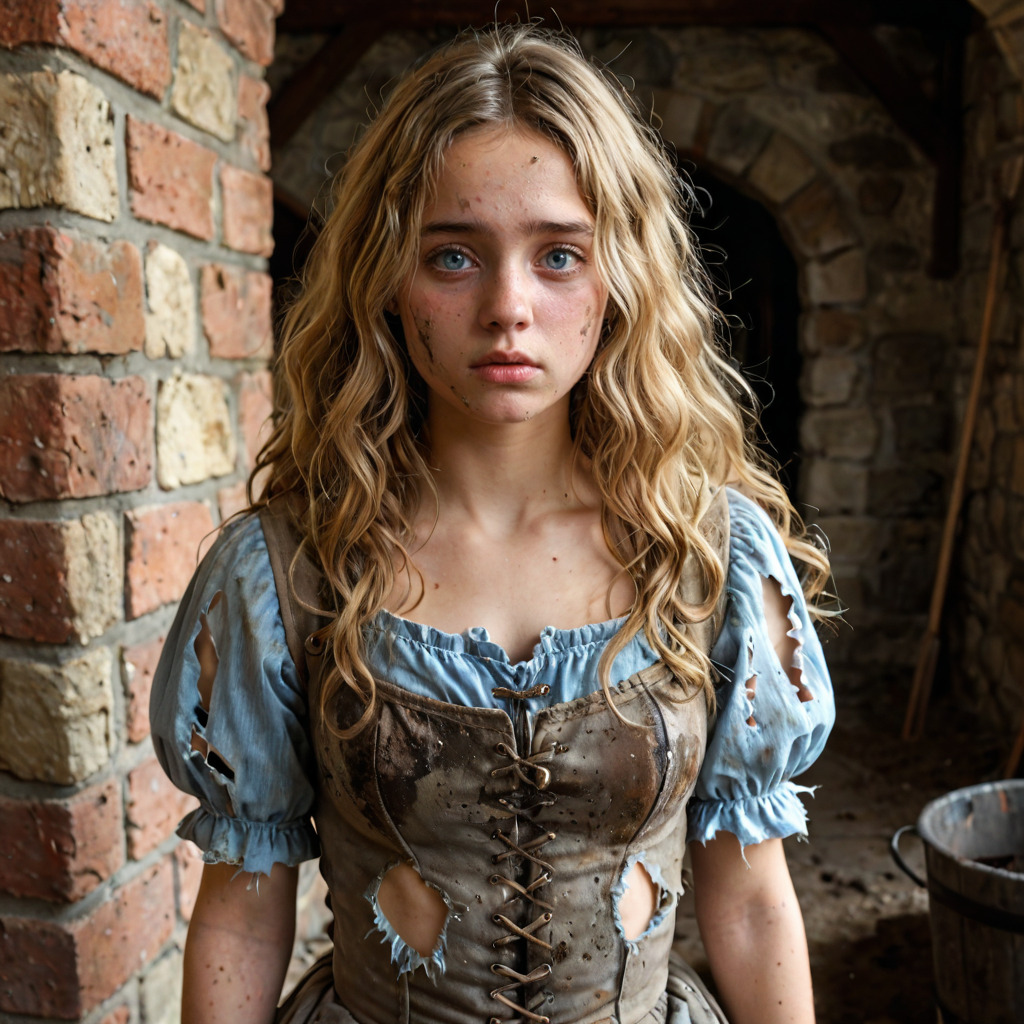🏰 It Wasn’t a Fairytale: The Dark Truth Behind Medieval Castles
✍️ Foreword
In a previous article, I explored the true nature of medieval knights, breaking apart the romantic myth that portrays them as spotless heroes, paragons of justice and virtue. As often happens with real history, the truth was far less noble: "Medieval knights were nothing like the stories say".
Today, I want to go even further. Because there’s another side of the Middle Ages that’s rarely discussed, and almost never taught in school: what really happened inside medieval castles, far from the eyes of peasants and away from the pages of sanitized history books.
Prepare to uncover the dark side of medieval life — a world of forced silence, bought bodies, and stolen innocence.
👑 Lords of the Castle and the Right of Ownership
In the Middle Ages, a feudal lord didn’t just own land and livestock. He owned people. Slaves, peasants, servants… and young girls. The bodies of women — often young servant girls, aged 12 to 16 — were considered part of the property, war spoils, or wealth of the castle.
There was no concept of “consent” in the feudal system. A girl captured during a raid would be brought into the castle as part of the loot. Her fate was sealed: labor by day, exploitation by night.
The infamous “jus primae noctis” — the lord’s supposed right to the first night with a new bride — is historically debated. But systemic sexual slavery is not. Chronicles describe girls being gifted to noblemen, punished if they refused, passed around as if they were display objects.
🍗 Feasts, Wine, and Bodies: Servants as Entertainment
After lavish banquets filled with roasted boars and overflowing goblets, distinguished guests were often rewarded with living flesh. Not just food, but girls. Young, clean, obedient. Chosen by the lord and offered as a token of prestige and generosity.
This wasn’t merely forced prostitution: it was a ritual humiliation disguised as hospitality. Soldiers laughed. Guests enjoyed. And the girls? They disappeared behind thick curtains, only to return to their duties at dawn as if nothing had happened.
🧹 Life as a Servant: Adolescent Slaves, Never Children
Inside the castle walls, the so-called “serving girls” were often young servant girls between 12 and 18. Taken from poor villages or kidnapped in raids, they were trained in submission. They knew how to clean, cook, stay quiet — and above all, never say no.
They were whipped, chained, branded. Some became the lord’s “favorites”. Others were passed around among drunk soldiers. If one became pregnant? She might be cast out, forced to abandon the child, or simply disappear.
There were no rights, only commands. Medieval slavery wasn’t a hidden flaw of the system — it was the system.
📜 The History We Don’t Want to Hear
Why don’t we learn about this in school? Why are medieval castles still portrayed as fairytale settings? Why has popular culture turned them into wedding venues and fantasy backdrops?
The truth is darker than any tale. Real history is made of cold stones, damp corridors, muffled screams, and broken bodies. Studying the Middle Ages without talking about this is like teaching about the Holocaust without mentioning the death camps.
History is not a fairytale. It’s a punch in the gut. And we need to be strong enough to take it.
🕯️ Time to Rewrite the Stories
Telling the truth about the Middle Ages means walking into darkness. It means acknowledging a world where violence was law, and the female body — especially the young — was currency.
This doesn’t mean rejecting the beauty of medieval art or stories of resistance. But it does mean stopping the lie. Even in the tales. Even in schoolbooks.
Because maybe only when we’re ready to tell the whole truth, can we say we truly know history.
📚 Historical Sources and Academic References
The reality described in this article is based on documented sources, contemporary chronicles, and established historical research. Here are some of the main testimonies confirming the presence of sexual exploitation, forced servitude, and gender-based violence in medieval castles:
🏰 Period Sources and Chronicles:
- Capitularia Regum Francorum (8th–9th century): royal decrees that show how servitude and the exploitation of women were regulated and institutionalized.
- Chronicon Angliae Petriburgense (14th century): monastic chronicles describing the abduction of young women during wars and feudal raids.
- Jean Froissart – Chroniques (14th century): one of the main sources on late medieval France, detailing courtly life where female servants were “offered” to high-ranking guests.
- Libro de los ejemplos del Conde Lucanor (Don Juan Manuel, 1335): though literary, it reflects a cultural context where sexual power was normalized in court life.
🧠 Academic Works and Studies:
- Ruth Mazo Karras, Sexuality in Medieval Europe: Doing Unto Others ➤ A foundational work exploring sex, power, and the absence of consent in medieval society.
- Barbara A. Hanawalt, The Ties That Bound: Peasant Families in Medieval England ➤ Documents the lives of peasant families and young female servants often subjected to sexual servitude.
- Georges Duby, Women of the Twelfth Century ➤ Shows how women — especially young ones — were used as political and sexual tools within noble households.
- Carlo Ginzburg, The Cheese and the Worms ➤ While not focused on women, this microhistorical study reveals the hidden dynamics of medieval daily life.
- Susan Brownmiller, Against Our Will ➤ A groundbreaking work on the history of rape as a weapon and power tool — including references to the medieval period.
⚖️ Final Note:
History is not only what survives in schoolbooks, but also what has been chosen to be told. These sources reveal a forgotten side of the past — one we can no longer afford to ignore.








Leave a Comment